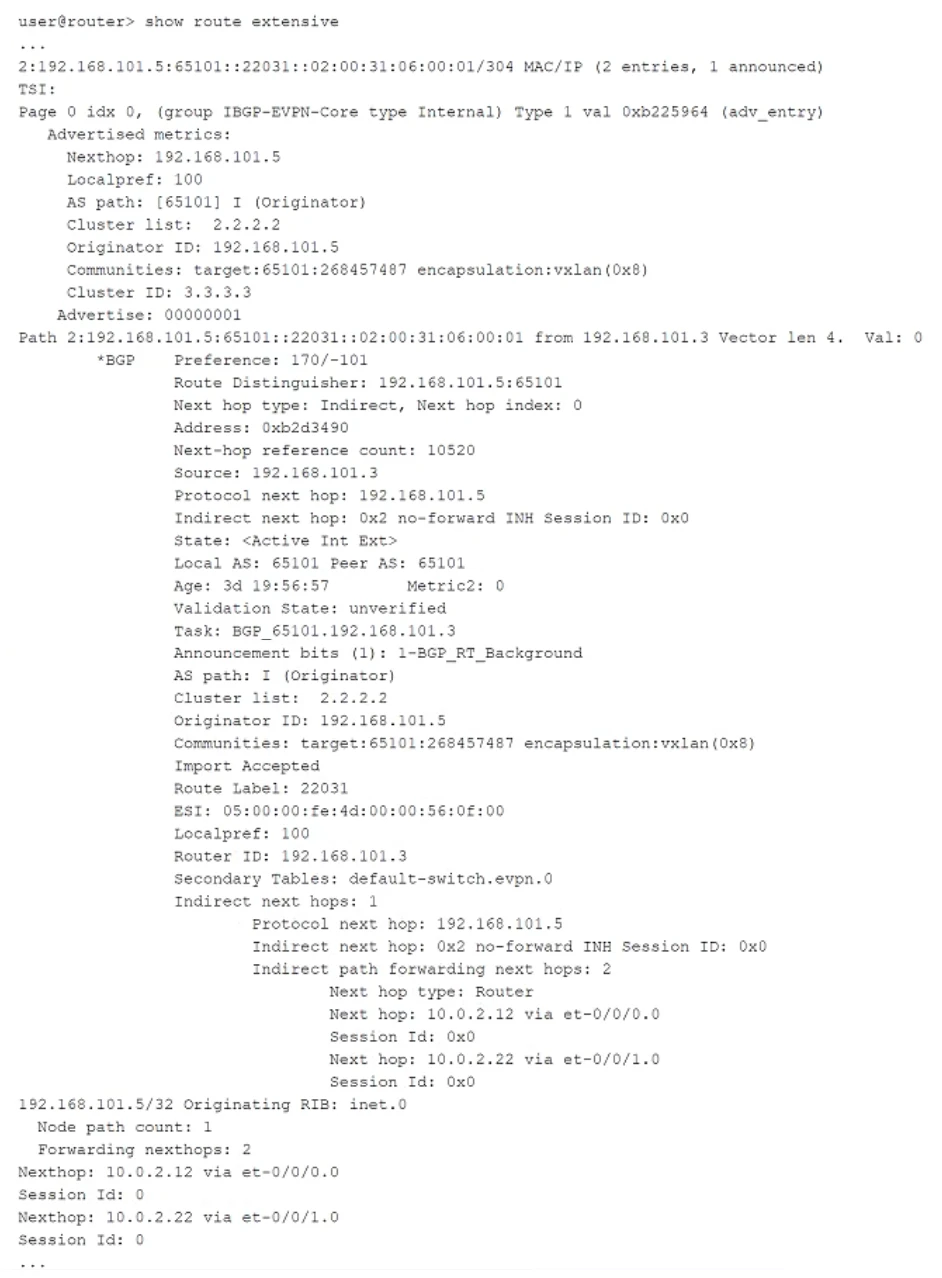
Referring to the exhibit, which two statements are true? (Choose two.)

The device advertising this route into EVPN is 192.168.101.5, as indicated by the Nexthop and Originator ID fields. Additionally, this is an EVPN Type-2 route, as highlighted by the type listed in the route extensive output.

To transport IPv6 traffic across an IPv4-based MPLS network using BGP, you need to configure family inet6 labeled-unicast between PE routers to exchange IPv6 routes with MPLS labels. Additionally, you must configure family inet6 unicast between PE and CE routers to exchange IPv6 routes without labels. The setup ensures that IPv6 traffic can be properly transported over the MPLS network by leveraging tunneling techniques. Therefore, configuring these address families accurately enables seamless integration between different network segments.
OSPFv3 supports both IPv4 and IPv6, but it requires IPv6 to be configured on the interfaces. This means that for OSPFv3 to be used in an IPv4 environment, the interfaces need to have the IPv6 address family (inet6) defined. Without this, OSPFv3 will not function correctly for IPv4.
EVPN (Ethernet VPN) is a technology that allows for Layer 2 services over an MPLS network by utilizing extensions to BGP. EVPN uses different types of BGP routes to distribute information about the Layer 2 network. Type 2 routes are used to advertise the MAC address and IP address pairs that are learned via ARP snooping or other mechanisms. Type 3 routes are used for creating multicast distribution trees that allow for the flooding of broadcast, unknown unicast, and multicast traffic within the EVPN instance. Segment routing and VXLAN are not mandatory for EVPN deployment in an MPLS network.
The vrf-target configuration in a Layer 3 VPN is used to manage the import and export of VPN routes. Specifically, the vrf-target target statement assigns a target community to routes. This helps in identifying BGP routes learned from remote PE devices (option A) and adds a target community to BGP routes advertised to remote PE devices (option C). This way, it ensures that routes are properly shared and understood between different parts of the VPN.